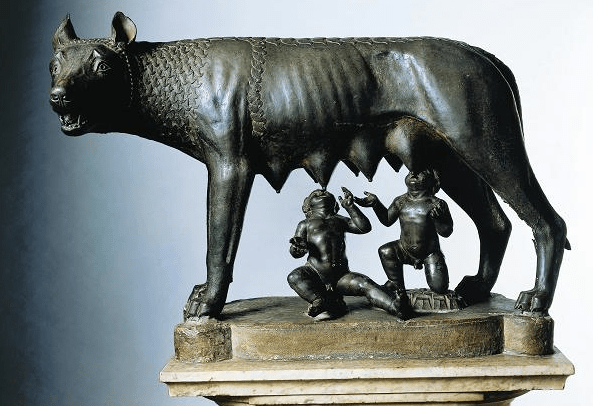
She-wolf
Ancient sources speak of two bronze statues of the she-wolf, one at Lupercal, mentioned in 295 when two of Olgunia's builders added a pair of twins to her, and the other at the Capitol, where Cicero reports that the she-wolf was struck by lightning in 65 BC. ... and has not been repaired since then. The bronze she-wolf, now in the Capitoline Museums, appears to have been created between the 10th and 14th centuries, not the Etruscan era of the 5th century. or 3rd century BC, as it was believed.
But for others, the she-wolf belongs to the 4th century. and twins of the fourteenth century. Looking closely at him, from the posture, the emphasized muscle tension and the details of the hair that seem to be embroidered, let's say that he strongly resembles the magnificent Etruscan workers, which were many in Rome.
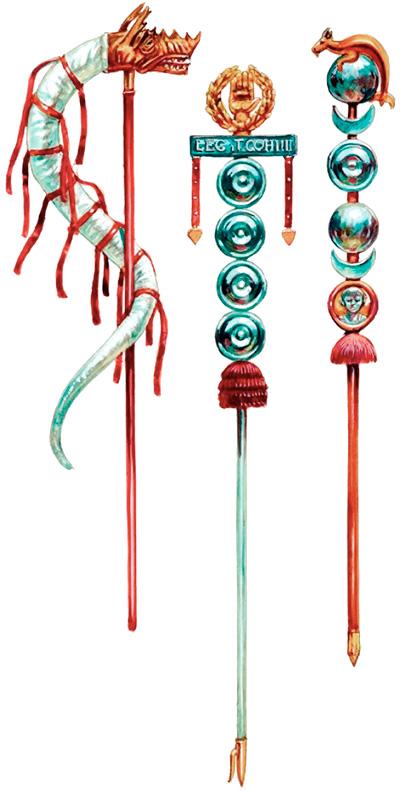 Capitoline in the 10th century, of course. was chained to the façade or inside the Lateran Palace: in the XNUMXth century Chronicon of Benedetto da Sorakte, where a monk describes the establishment of a supreme court of justice " in the Lateran palace, in a place called .... is the mother of the Romans. "Trials and executions" to the wolf "recorded before 1450
Capitoline in the 10th century, of course. was chained to the façade or inside the Lateran Palace: in the XNUMXth century Chronicon of Benedetto da Sorakte, where a monk describes the establishment of a supreme court of justice " in the Lateran palace, in a place called .... is the mother of the Romans. "Trials and executions" to the wolf "recorded before 1450
... The statue passed in 1471 in the church of San Teodoro, then transferred by Sixtus IV della Rovere to the "Roman people" and since then it has been in the Capitoline Museums, in the Loup Hall.
The sculpture depicts a she-wolf caring for a pair of little twins, Romulus and Remus, added in the 15th century, possibly by Antonio del Pollaiolo. On the engraving Mirabilia Urbis Romae (Rome, 1499), he already appears with two twins.
On the Palatine Hill, during archaeological excavations, about 15 meters from the foundation of the Villa Augusta was discovered луперкаль , an underground domed building from the Roman era.
This structure could be identified with the sanctuary cave where the legendary she-wolf nursed the two legendary children of Mars and Ri Sylvia.
«The Etruscan wolf represented the god of the underworld, Aitu, while the wolf was also a symbol of the purifying and fertilizing god Soran, whom the Sabines revered on Mount Soratta. But among the Sabine women, the she-wolf was a sacred animal for Mamers, similar to the Roman god Mars, who, according to legend, was the father of the twins, and for this reason the she-wolf had the attribute of Marcia. In addition, the patron animal of the Latins was Luperco, from the Sabine term hirpus, meaning "wolf", therefore, having appeared as a she-wolf, the animal could be Luperk, the god of shepherds and protector of the herd from wolves, on whose behalf the holidays were celebrated dei Lupercalia on February 15. «
So they say, but in fact the she-wolf who nursed was a Goddess, it is difficult to imagine a God who is breastfeeding. The wolf goddess.it was an ancient deity of nature, the Great Mother, whose priestesses, in the name of the fertility of the Goddess, professed hierodule , or sacred prostitution, around the volcanic lakes of Castelli Romani.
In fact, in Nemi they performed a sacred bathing ritual every year that forced them to return to their virgins. Moreover, the ancients used the term Virgo meant not an unlikely woman, but one who is strong and not Allows to submit to oneself, in fact, the term “virgin virgin” was used for illibata.
From the goddess Lupa also comes the word Lupanar , or brothel, for a verse about the she-wolf of prostitutes attracting passers-by, the legacy of the abolished hierodulia, which turned into secular prostitution.
In ancient times, priestesses howled at the moon in the name of the Goddess. Earlier, Luperkali were dedicated to the goddess Lupe, then with the arrival of the patriarchy of Lupe, Luperco became.
The episode of the attack of a she-wolf, first told in the third century BC by the Greek historian Diocles Pepareto and, after him, by the Roman chronicler Quinto Fabio Pittore, shows that outside the Bronze Age of the she-wolf, Sacra Lupa existed as a deity.
However, the she-wolf came down to us, overcoming barbaric invasions and medieval neglect, even if lightning struck her in 65 BC, destroying two twins.
In the Middle Ages, it was placed in Lateran, outside Torre degli Annibaldi, on a stone foundation supported by grappas hammered into the wall, until Sixtus IV, considering it quite pagan, donated it to the Conservatives with 10 golden florins for the reconstruction of two twins.
In fact, they were cast by Antonio Pollaiolo in 1473, and Lupa remained under the portico of the Palazzo dei Conservatory until 1538, when it was moved to the colonnade that adorns the first floor in the middle of the façade.
Finally, in 1586, it was installed on a pedestal in the center of a room called della Lupa, where it still stands today. One is in the room of the Palazzo di Montecitorio, and the other is in the open air, on a column along the left side of the Palazzo Senatorio in Campidoglio.
Based on the casting technique, the she-wolf is said to be medieval, in fact it is cast as one piece, while in ancient times the statues were melted into different parts and then assembled, but there are also large solid castings such as the Riace bronze. The most recent date was chosen primarily because it is not as accurate and retouched as the most ancient statues, but all of this can be seen because eminent archaeologists such as Calandrini claim that it is very similar to Etruscan casting, even for the component from alloy. ...
In Etruria, the history of breastfeeding a she-wolf or lioness is documented at least from the late XNUMXth century BC through the famous burial stone of Bologna.
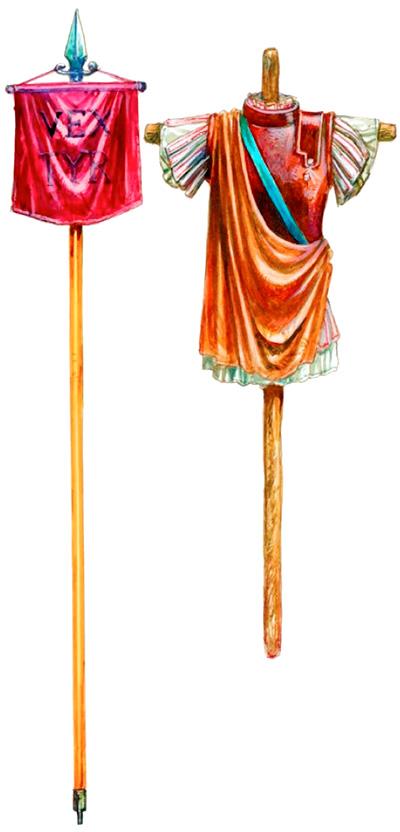 In Rome, with the exception of the Dornestine mirror of Bolsena, the oldest depictions no longer date back to the third century BC, with the exception of the Capitoline wolf.
In Rome, with the exception of the Dornestine mirror of Bolsena, the oldest depictions no longer date back to the third century BC, with the exception of the Capitoline wolf.
The ancient bronze, with twins added later, turned out to be a work of immense artistic endeavor, whose civic and sacred significance can only be traced in the founding legend.
The image was preserved in the Lupercal cave, which Dionysius of Halicarnassus in the 492st century AD. dc recalls a very archaic character, it survived after the work carried out in the era of Augustus, at least until the fifth century AD, when, after the protests of Pope Gelasius I (496-XNUMX), the feast of Lupercalia was canceled and replaced with the feast of the Purification of the Virgin ...
лиано — The nature of animals
«So they say that Latona, having given birth to this God, turned into wolf ; and therefore Homer, speaking of Apollo, uses the expression "the famous archer, born of a she-wolf." And this also explains why, as far as I know, there is a bronze statue of a wolf in Delphi, dating back to the birth of Latona. «
It makes us think about the ancient goddess Lupe.
We must not forget, as Polybius tells us, that velites , the Roman light infantry, wore a wolfskin over their helmets, which in large part refers to the tribe's combat mantle, in which the spirit of the wolf revived the fighter.
Sally's priests in the Ides of March carried in a procession the shields of the nymph Egeria, which later became the shields of Mars, through the streets of Rome, dressed in wolf skins ... A characteristic feature of patriarchy was the removal, but not completely, of the "aggressive" clothing of female deities, giving it only to male gods, while the most ancient peoples saw nature and the deities that flowed from this, destructive and creative, but not destructive. for evil, but for their nature, like nature itself. For this reason, the shields moved from Egeria to Mars, and for this reason Mars is already the God of gardens, and the warrior also became a swift warrior and that's it.
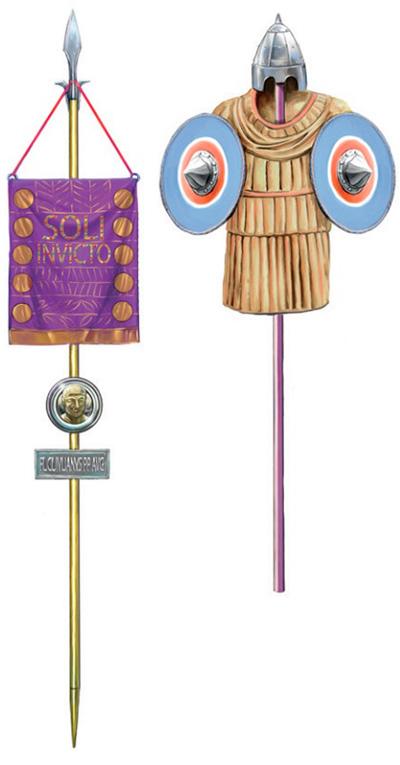
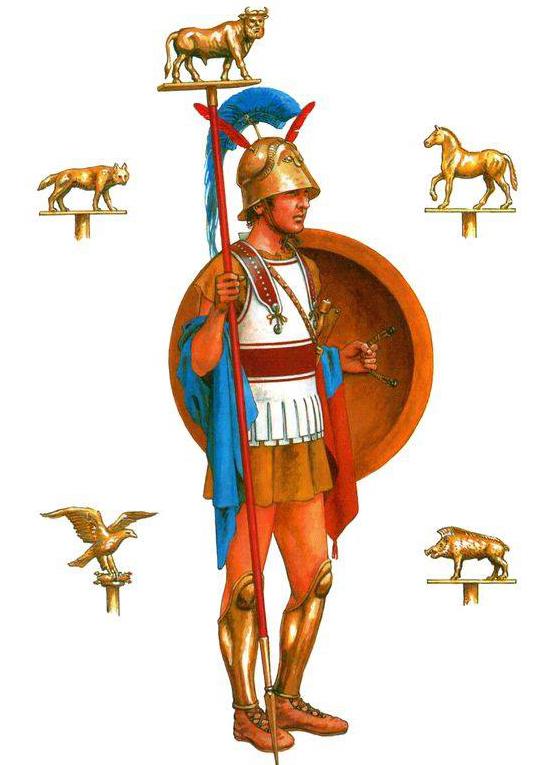
Leave a Reply